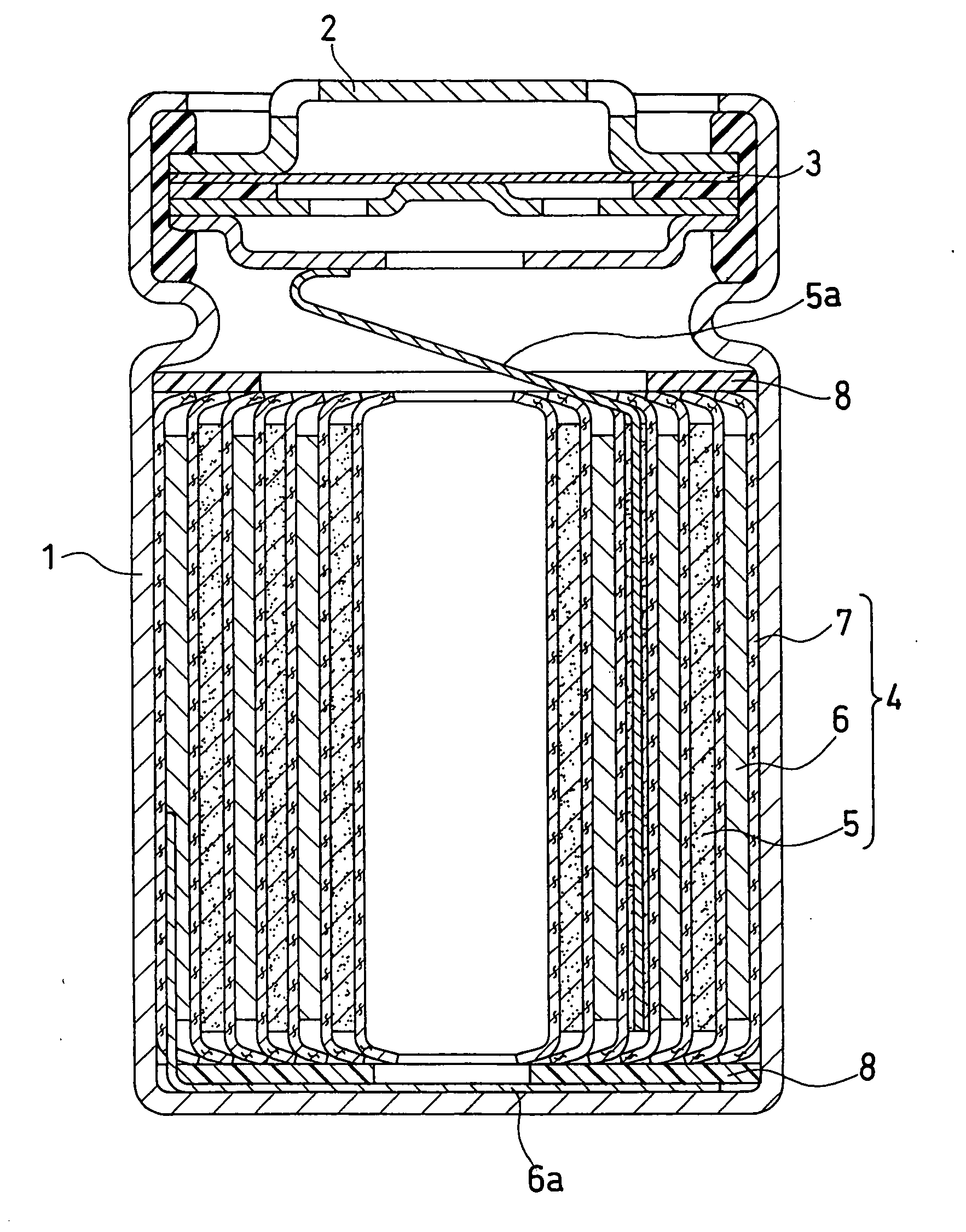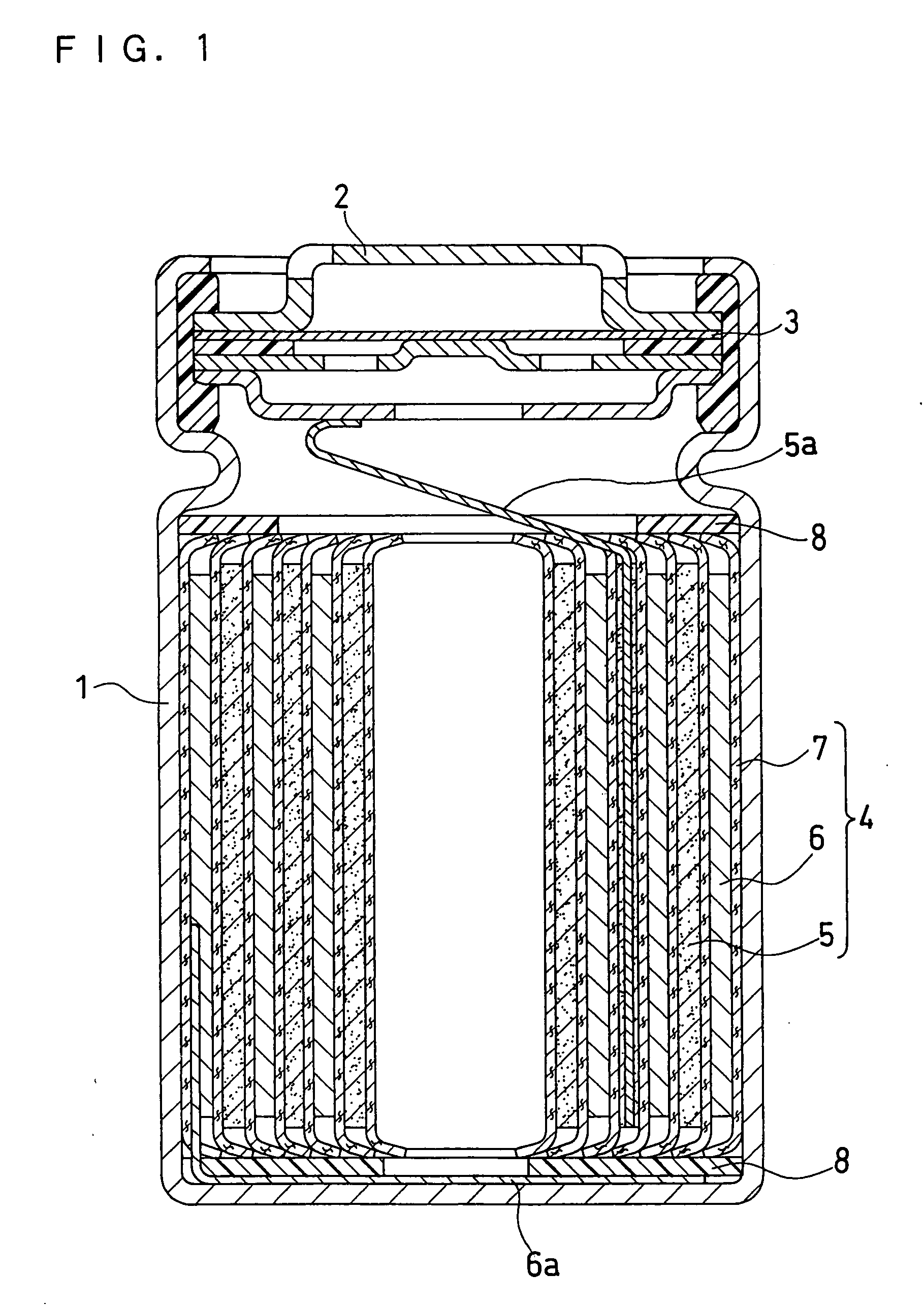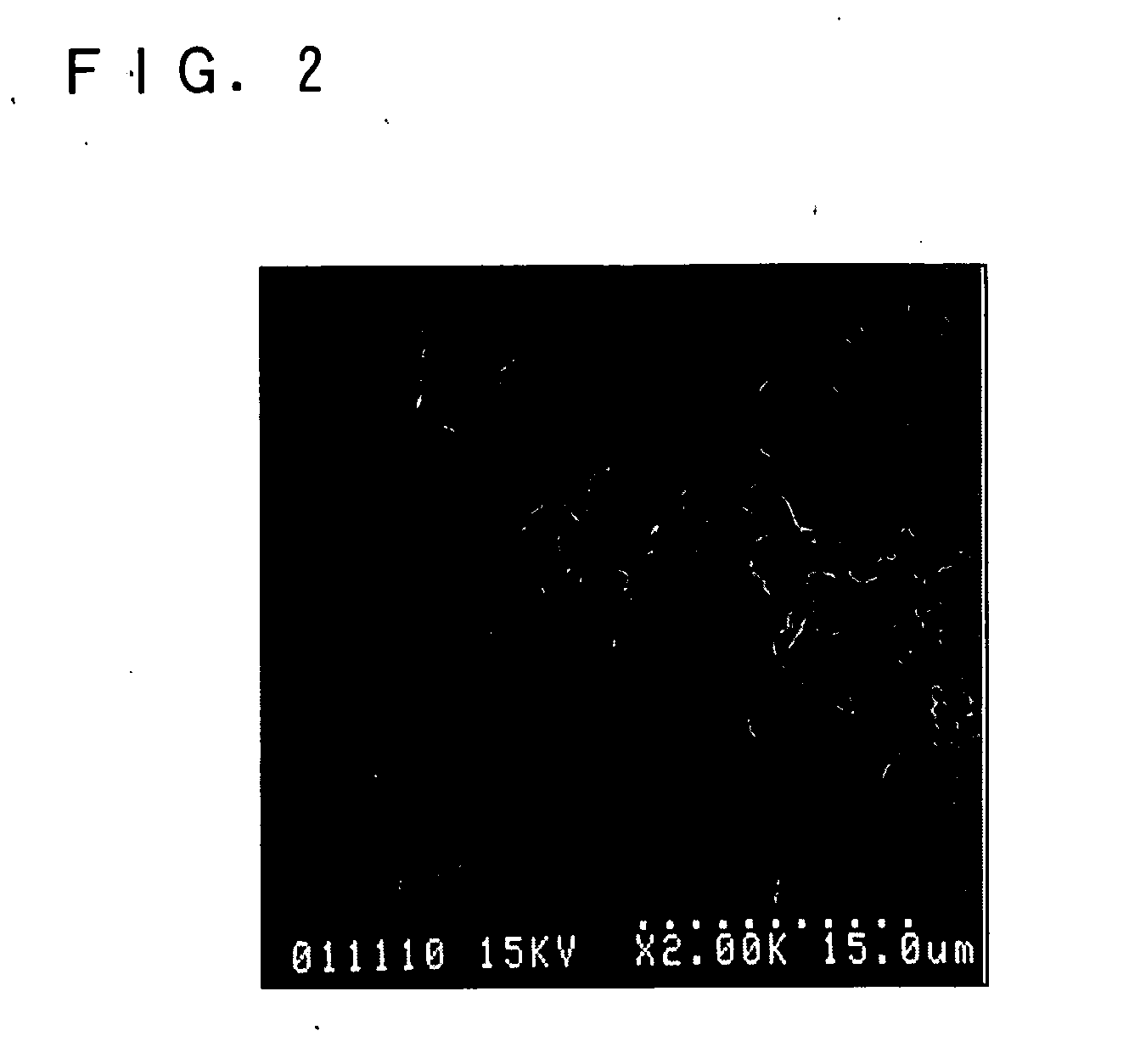Positive electrode active material, non-aqueous electrolyte secondary battery containing the same and method for evaluating positive electrode active material
a technology of active materials and positive electrodes, which is applied in the direction of oxygen/ozone/oxide/hydroxide, cell components, electrochemical generators, etc., to achieve excellent properties and excellent productivity
- Summary
- Abstract
- Description
- Claims
- Application Information
AI Technical Summary
Benefits of technology
Problems solved by technology
Method used
Image
Examples
example 1
(i) Preparation of Lithium-Containing Composite Oxide
[0059] As a lithium-containing composite oxide, LiCoO2 was prepared in the procedure below.
[0060] An aqueous solution containing 1.0 mol / L cobalt sulfate dissolved therein was continuously fed into a reaction vessel, during which sodium hydroxide was added dropwise to the reaction vessel with the pH of the aqueous solution in the vessel maintained at 10 to 13, to yield Co(OH)2, i.e. the hydroxide precursor for LiCoO2. In order to make the reaction uniform, the aqueous solution in the reaction vessel was constantly stirred by a motor at a constant rate of 500 rpm.
[0061] The hydroxide precursor was mixed with lithium carbonate such that the molar ratio of cobalt and lithium was 1:1. The resulting mixture was then prebaked (first baking) in an atmosphere of air at 600° C. for 10 hours, which was then pulverized.
[0062] The pulverized mixture was baked again (second baking) in an atmosphere of air at 900° C. for 10 hours, which wa...
example 2
[0068] As a lithium-containing composite oxide, LiCo0.995Mg0.005O2 was prepared in the procedure below.
[0069] A mixed aqueous solution containing 0.995 mol / L cobalt sulfate and 0.005 mol / L magnesium sulfate dissolved therein was continuously fed into a reaction vessel, during which sodium hydroxide was added dropwise to the reaction vessel with the pH of the aqueous solution in the vessel maintained at 10 to 13, to yield Co0.995Mg0.005(OH)2, i.e. the hydroxide precursor for LiCo0.995Mg0.005O2. In order to make the reaction uniform, the aqueous solution in the reaction vessel was constantly stirred by a motor at a constant rate of 500 rpm.
[0070] The hydroxide precursor was mixed with lithium carbonate such that the molar ratio of cobalt, magnesium and lithium was 0.995:0.005:1. The resulting mixture was then prebaked (first baking) in an atmosphere of air at 600° C. for 10 hours, which was then pulverized.
[0071] The pulverized mixture was baked again (second baking) in an atmosphe...
example 3
[0073] As a positive electrode active material, LiCo0.995Mg0.005O2 was prepared in the same manner as EXAMPLE 2 (hereinafter referred to as “positive electrode active material 3”) except that the temperature of the second baking after the prebaking (first baking) was changed from 900° C. to 950° C.
[0074] A positive electrode plate and a lithium ion secondary battery were produced in the same manner as EXAMPLE 1 except that the positive electrode active material 3 was used instead of the positive electrode active material 1. The thus-obtained positive electrode plate and lithium ion secondary battery are referred to as “positive electrode plate 3” and “battery 3”, respectively.
PUM
| Property | Measurement | Unit |
|---|---|---|
| tap density | aaaaa | aaaaa |
| specific surface area | aaaaa | aaaaa |
| particle size | aaaaa | aaaaa |
Abstract
Description
Claims
Application Information
 Login to View More
Login to View More - R&D
- Intellectual Property
- Life Sciences
- Materials
- Tech Scout
- Unparalleled Data Quality
- Higher Quality Content
- 60% Fewer Hallucinations
Browse by: Latest US Patents, China's latest patents, Technical Efficacy Thesaurus, Application Domain, Technology Topic, Popular Technical Reports.
© 2025 PatSnap. All rights reserved.Legal|Privacy policy|Modern Slavery Act Transparency Statement|Sitemap|About US| Contact US: help@patsnap.com



